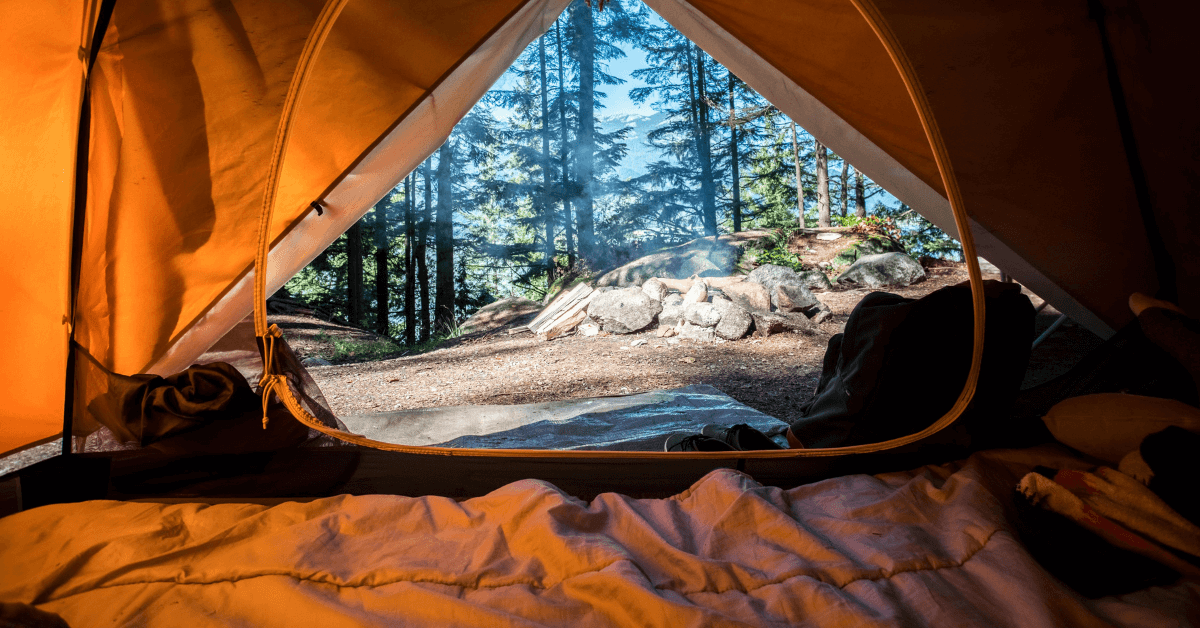Camping is a great way to escape the hustle and bustle of everyday life and connect with nature. However, Mother Nature can sometimes bring a little too much excitement in the form of rain. It’s important to stay dry when camping, not only for comfort but also for safety.
One of the most important things to consider when camping in the rain is what you’ll put under your tent. The ground can quickly become waterlogged, which can lead to a soggy and uncomfortable sleeping experience. But with a little preparation, you can stay dry and comfortable even on the wettest of camping trips.
From tent footprints to shower curtains, here are four things you can put under your tent when it rains.
1. A Tent Footprint
A tent footprint is a specially designed material that fits under your tent to protect it from wear and tear. It also acts as a barrier between the ground and your tent floor, keeping you dry even in the wettest conditions.
One of the biggest benefits of using a tent footprint is that it’s specifically designed for your tent. This means it’ll be the perfect size and shape to provide maximum coverage and protection. Plus, many tent footprints are made from lightweight, waterproof materials, so you can pack them easily in your camping gear.
When choosing a tent footprint, it’s important to select the right size for your tent. Make sure to measure your tent and compare it to the size of the footprint before making your purchase. A footprint that’s too small won’t provide adequate protection, while one that’s too big will add extra weight to your pack.
Setting up a tent footprint is easy and straightforward. Simply place it on the ground where you plan to set up your tent and then place your tent on top of it. Make sure to center the tent on the footprint and stake both the tent and the footprint securely to the ground.
2. A Tent Tarp
A tarp is a versatile piece of camping gear that can be used for a variety of purposes, including keeping your tent dry in the rain. Tarps come in a range of sizes and materials, so you can choose one that best fits your needs.
One of the benefits of using a tarp under your tent is that it’s budget-friendly. Tarps can be found at most outdoor and hardware stores, and they’re generally less expensive than tent footprints. Plus, they can be used for other camping tasks, such as sheltering your gear or creating a makeshift dining area.
When choosing a tarp for use under your tent, it’s important to consider the size. You’ll want to select a tarp that’s slightly larger than your tent floor to ensure full coverage. You’ll also want to consider the weight of the tarp and make sure it’s something you’re comfortable carrying on your camping trip.
Setting up a tarp under your tent is simple and straightforward. First, lay the tarp on the ground where you plan to set up your tent. Then, place your tent on top of the tarp, making sure that the tarp is centered underneath the tent. Secure the corners of the tarp to the ground with stakes, and you’re good to go!
All that said, while tarps are a budget-friendly option for keeping your tent dry in the rain, it’s worth noting that they’re not as durable as tent footprints and may not provide the same level of protection. However, if you’re on a tight budget or already have a tarp on hand, it’s a quick and easy solution for keeping your tent dry.
Related: What Is The Best Waterproof Material For Tents?
3. The Shower Curtain
Who knew a simple shower curtain could be such a lifesaver on a camping trip? That’s right, a shower curtain can be used as an alternative to a tent footprint or tarp when camping in the rain.
Shower curtains are lightweight and compact, making them a convenient option for backpackers or those looking to save space in their gear. They’re also budget-friendly, as you can easily find them at your local department store.
When choosing a shower curtain for use under your tent, look for one that’s made from a waterproof material. You’ll also want to make sure the size is appropriate for your tent.
Setting up a shower curtain under your tent is similar to setting up a tarp. Simply lay the shower curtain on the ground where you plan to set up your tent, and then place your tent on top of it. Make sure the shower curtain is centered under the tent and stake it securely to the ground.
4. The Camp Pad
Camp pads, also known as sleeping pads or ground pads, are a popular choice for campers looking to add extra insulation and cushioning to their sleeping setup. But did you know that they can also serve as a barrier between your tent and the wet ground?
Camp pads come in a variety of materials, including closed-cell foam and air-filled options. When choosing a camp pad for use under your tent, look for one that’s made from a waterproof material. Some camp pads even come with a built-in tarp to provide extra protection from the rain.
Using a camp pad under your tent is as simple as laying it on the ground and placing your tent on top. Not only will the camp pad protect your tent from the rain, but it will also provide added insulation and cushioning for a more comfortable camping experience.
While camp pads can be a bit pricier than other options, they’re a durable and long-lasting solution for keeping your tent dry in the rain. Plus, they can double as a comfortable sleeping surface, making them a versatile and convenient addition to your camping gear.
